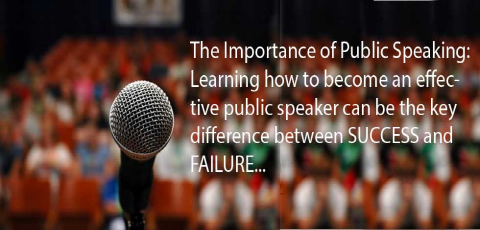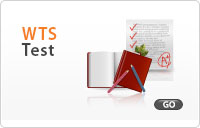
   |
[Speaking] (PS-016) 유전 연구가 더욱 다양해져야 하는 이유 - Keolu Fox
최고관리자 | 16-10-13 16:29

대중 연설은 아마도 단순한 언어의 기술적 구사가 아닌, 청중을 사로잡는 노력과 준비로
만들어진 언변(言辯)의 결과물이라 할 수 있을 것입니다. 명연설은 한 사람의 인생을 완전히
바꾸기도 하지요. 영어 공부에 있어서 가장 중요한 "듣고/이해"하는 능력을 꾸준히 배양하여
튼튼한 영어 실력을 기르길 바랍니다.
[TED 클릭]
[Transcript]
0:11
하와이에 사는 어린이인 저에게 어머니와 이모는 항상 칼라우파파 이야기를 들려주시곤 했죠. 칼라우파파는 하와이의 나환자 수용소로 세계에서 가장 높은 해식절벽들로 둘러싸여 있었습니다. 데미안 신부님에 대한 이야기도 항상 해주셨는데 그분은 평생 하와이 주민들을 위해 몸바치신 벨기에 선교사셨죠. 젊은 간호사였던 제 이모는 수녀들이 남아 있는 나환자들을 돌볼 수 있도록 교육시켰습니다. 데미안 신부님이 나병으로 사망한 후 100년 후에 말입니다. 저는 이모가 들려준 이야기를 기억합니다. 칼라우파파까지 내려가는 길을 슬리퍼를 신고 지그재그로 갈 때 이모부는 이모가 제일 좋아하는 훌라 노래를 연주하고는 했다는 이야기를요.
As a little Hawaiian, my mom and auntie always told me stories about Kalaupapa -- the Hawaiian leper colony surrounded by the highest sea cliffs in the world -- and Father Damien, the Belgian missionary who gave his life for the Hawaiian community. As a young nurse, my aunt trained the nuns caring for the remaining lepers almost a 100 years after Father Damien died of leprosy. I remember stories she told about traveling down switchback cliff paths on a mule, while my uncle played her favorite hula songs on the ukulele all the way down to Kalaupapa.
0:45
어린 아이로서 저는 몇 가지 궁금한 점이 있었어요. 첫째는 왜 벨기에 선교사가 칼라우파파에서 완전히 고립되 사는 삶을 선택했는지 였습니다. 결국에는 그가 도와주려던 사람들의 집단으로부터 나병이 감염될 것을 알면서도요. 두번째로 어디서 그 나병 박테리아가 온 것일까요? 그리고 왜 하와이의 토착민인 카나카 마오리족이 "마이 파케" 즉 나병에 걸릴 확률이 높았던 것일까요?
You see, as a youngster, I was always curious about a few things. First was why a Belgian missionary chose to live in complete isolation in Kalaupapa, knowing he would inevitably contract leprosy from the community of people he sought to help. And secondly, where did the leprosy bacteria come from? And why were Kānaka Maoli, the indigenous people of Hawaii, so susceptible to developing leprosy, or "mai Pake?"
1:14
그래서 우리 하와이인이 왜 독특한 건지 궁금해졌습니다. 즉, 우리의 유전학적 구성에 대해 말입니다. 하지만 제가 고등학교 때 인간 게놈 프로젝트를 접하고 나서야 우리의 독특한 유전적 혈통을 건강과 질병 등 잠재적 건강과 연관짓는 유일한 사람이 아니라는 것을 알게 되었습니다. 보시면 27억 달러짜리 프로젝트가 우리의 유전적 구성에 근거한 예방 의학과 예측의 시대를 약속했습니다. 그래서 저에겐 이 꿈을 이루기 위해선 우리가 다양한 집단의 사람들을 서열 작업하여 지구의 인간의 유전자 차이 스펙트럼을 얻어야 한다는 것이 분명해 보였습니다. 그래서 10년 후에도 제가 여전히 놀라는 것은 특정 질병들의 공통 유전자 차이 관련 게놈 연구의 96%가 유럽 혈통의 개인들에게만 집중되어 있다는 것입니다.
This got my curious about what makes us unique as Hawaiians -- namely, our genetic makeup. But it wasn't until high school, through the Human Genome Project, that I realized I wasn't alone in trying to connect our unique genetic ancestry to our potential health, wellness and illness. You see, the 2.7 billion-dollar project promised an era of predictive and preventative medicine based on our unique genetic makeup. So to me it always seemed obvious that in order to achieve this dream, we would need to sequence a diverse cohort of people to obtain the full spectrum of human genetic variation on the planet. That's why 10 years later, it continues to shock me, knowing that 96 percent of genome studies associating common genetic variation with specific diseases have focused exclusively on individuals of European ancestry.
2:13
박사학위가 없어도 나머지 다양한 민족을 위해선 4%밖에 남지 않는 다는 것을 보실 수 있죠. 그리고 제가 직접 찾아본 결과 1%도 안되는 연구가 저 같은 토착민족들에 대한 것이었습니다. 이러한 질문이 떠오를 수밖에 없죠: 인간 게놈 프로젝트는 누구를 위한 것인가? 우리가 다른 색의 눈과 머리카락을 가지고 있는 것처럼 우리가 가진 게놈의 차이에 따라 약을 대사하는 과정이 서로 다릅니다. 여러분들 중 몇분이 임상실험의 95%가 유럽혈통의 개인에게만 맞추어져 있다는 것을 아시고 놀라실까요?
Now you don't need a PhD to see that that leaves four percent for the rest of diversity. And in my own searching, I've discovered that far less than one percent have actually focused on indigenous communities, like myself. So that begs the question: Who is the Human Genome Project actually for? Just like we have different colored eyes and hair, we metabolize drugs differently based on the variation in our genomes. So how many of you would be shocked to learn that 95 percent of clinical trials have also exclusively featured individuals of European ancestry?
2:49
이 편견과 임상실험과 게놈 연구 모두에 있어서 토속민에 대한 체계적인 참여의 부족은 부분적으로 불신의 역사에서 기인한 것입니다. 한 예로 1989년 아리조나 주립대학의 연구자들은 아리조나 하바수파이족으로부터 혈액 샘플을 채취하였고 당시 그곳에 만연하던 2형 당뇨병을 치료하는데 쓰겠다고 약속했지만 이를 저버리고 그 샘플을 하바수파이족의 동의도 없이 정신분열증과 근친교배 비율을 연구하고 하바수파이의 기원 설화를 비판하는데 이용했습니다. 하바수파이족이 이를 알아내고 고소해 70만 달러의 배상금을 받았으며 그들 보호지역에서 아리조나 주립대학이 연구하는 것을 금지시켰습니다. 이는 일종의 도미노 현상을 미국에서 가장 큰 종족들 중 하나인 나바호를 포함한 북동쪽 지역 부족들에도 영향을 미쳐서 유전 연구를 일시 정지시켰습니다.
This bias and systematic lack of engagement of indigenous people in both clinical trials and genome studies is partially the result of a history of distrust. For example, in 1989, researchers from Arizona State University obtained blood samples from Arizona's Havasupai tribe, promising to alleviate the burden of type 2 diabetes that was plaguing their community, only to turn around and use those exact same samples -- without the Havasupai's consent -- to study rates of schizophrenia, inbreeding, and challenge the Havasupai's origin story. When the Havasupai found out, they sued successfully for $700,000, and they banned ASU from conducting research on their reservation. This culminated in a sort of domino effect with local tribes in the Southwest -- including the Navajo Nation, one of the largest tribes in the country -- putting a moratorium on genetic research.
3:50
이 불신의 역사에도 불구하고 저는 여전히 토착민이 유전 연구에서 혜택을 받을 수 있다고 믿습니다. 빨리 무언가를 하지 않는다면 건강의 격차는 계속 벌어질 것입니다. 예를 들어 하와이는 미국 어느 주보다 평균 수명이 높지만 저와 같은 하와이 원주민들은 비원주민들보다 10년은 빨리 죽습니다. 왜냐하면 우리는 2형 당뇨병 비만 그리고 사상자를 많이 내는 미국의 2대 질병인 심혈관계 질환과 암에 걸릴 확률이 매우 높기 때문입니다.
Now despite this history of distrust, I still believe that indigenous people can benefit from genetic research. And if we don't do something soon, the gap in health disparities is going to continue to widen. Hawaii, for example, has the longest life expectancy on average of any state in the US, yet native Hawaiians like myself die a full decade before our non-native counterparts, because we have some of the highest rates of type 2 diabetes, obesity, and the number one and number two killers in the US: cardiovascular disease and cancer.
4:24
그러니 우리가 어떻게 하면 게놈 배열이 가장 필요한 인구가 가장 늦게 이득을 보지 않게 할 수 있을까요? 제 비전은 유전 연구를 더욱 토착민 친화적으로 만드는 것입니다. 게놈 배열 기술의 현지인화 하기 위해서요.
So how do we ensure the populations of people that need genome sequencing the most are not the last to benefit? My vision is to make genetic research more native, to indigenize genome sequencing technology.
4:39
전통적으로 게놈은 연구실에서 배열되었습니다. 여러분이 생각하시는 전형적인 게놈 배열기의 모습입니다. 엄청 크죠. 냉장고만한 크기입니다. 이런 분명한 물리적 한계도 있습니다. 하지만 게놈 배열을 즉시 만들어낼 수 있다면요? 게놈 배열기가 주머니 안에 들어간다면요? 이 나노포어 기반 배열기는 생각하시는 전통적인 게놈 배열기의 만분의 일 크기입니다. 이것이 물리적 한계를 가지고 있지 않은 점은 실험실 작업대에 외부선들과 커다란 화학약품통 또는 컴퓨터 모니터에 묶여있지 않다는 점입니다. 이것은 게놈 배열기 기술 발전의 뚜껑을 열어서 몰입적이고 협력적이며 토착민 공동체를 활성화시키고 북돋아 줍니다. 시민 과학자로서 말입니다.
Traditionally, genomes are sequenced in laboratories. Here's an image of your classic genome sequencer. It's huge. It's the size of a refrigerator. There's this obvious physical limitation. But what if you could sequence genomes on the fly? What if you could fit a genome sequencer in your pocket? This nanopore-based sequencer is one 10,000th the size of your traditional genome sequencer. It doesn't have the same physical limitations, in that it's not tethered to a lab bench with extraneous cords, large vats of chemicals or computer monitors. It allows us to de-black box genome sequencing technology development in a way that's immersive and collaborative, activating and empowering indigenous communities ... as citizen scientists.
5:34
100년 후 칼라우파파에서 우리는 나병 박테리아를 실시간으로 배열하는 기술을 보유하고 있습니다. 모바일 게놈 배열기와 인터넷 원격 접속 그리고 클라우드 계산을 이용해서요. 하지만 하와이 사람들이 이를 원해야만 가능하죠. 우리의 공간에서 우리의 방식으로 이루어져야 합니다.
100 years later in Kalaupapa, we now have the technology to sequence leprosy bacteria in real time, using mobile genome sequencers, remote access to the Internet and cloud computation. But only if that's what Hawaiian people want. In our space, on our terms.
5:57
토착게놈 연구는 사람을 위한 사람에 의한 과학입니다. 우리는 부족 자문 재원을 시작하여 토착민들에게 유전 정보의 잠재적 사용과 오용에 대해 교육하는 것으로부터 시작하려 합니다. 결국 우리는 우리만의 토착게놈 연구소를 만들어 직접 실험을 하고 다음 세대 토착민 출신 과학자들을 양성하고자 합니다.
IndiGenomics is about science for the people by the people. We'll be starting with a tribal consultation resource, focused on educating indigenous communities on the potential use and misuse of genetic information. Eventually we'd like to have our own IndiGenomics research institute to conduct our own experiments and educate the next generation of indigenous scientists.
6:22
결국 토착민들은 유전 연구에 대상이 아닌 협력자가 되어야 합니다. 외부인들에게는 데미안 신부님이 그랬듯이 연구계가 토착 문화에 푹 빠질 필요가 있습니다. 그렇지 않으면 애쓰다 죽어갈 것입니다.
In the end, indigenous people need to be partners in and not subjects of genetic research. And for those on the outside, just as Father Damien did, the research community needs to immerse itself in indigenous culture or die trying.
6:39 감사합니다. Mahalo.
6:41 (박수) (Applause)
   |




